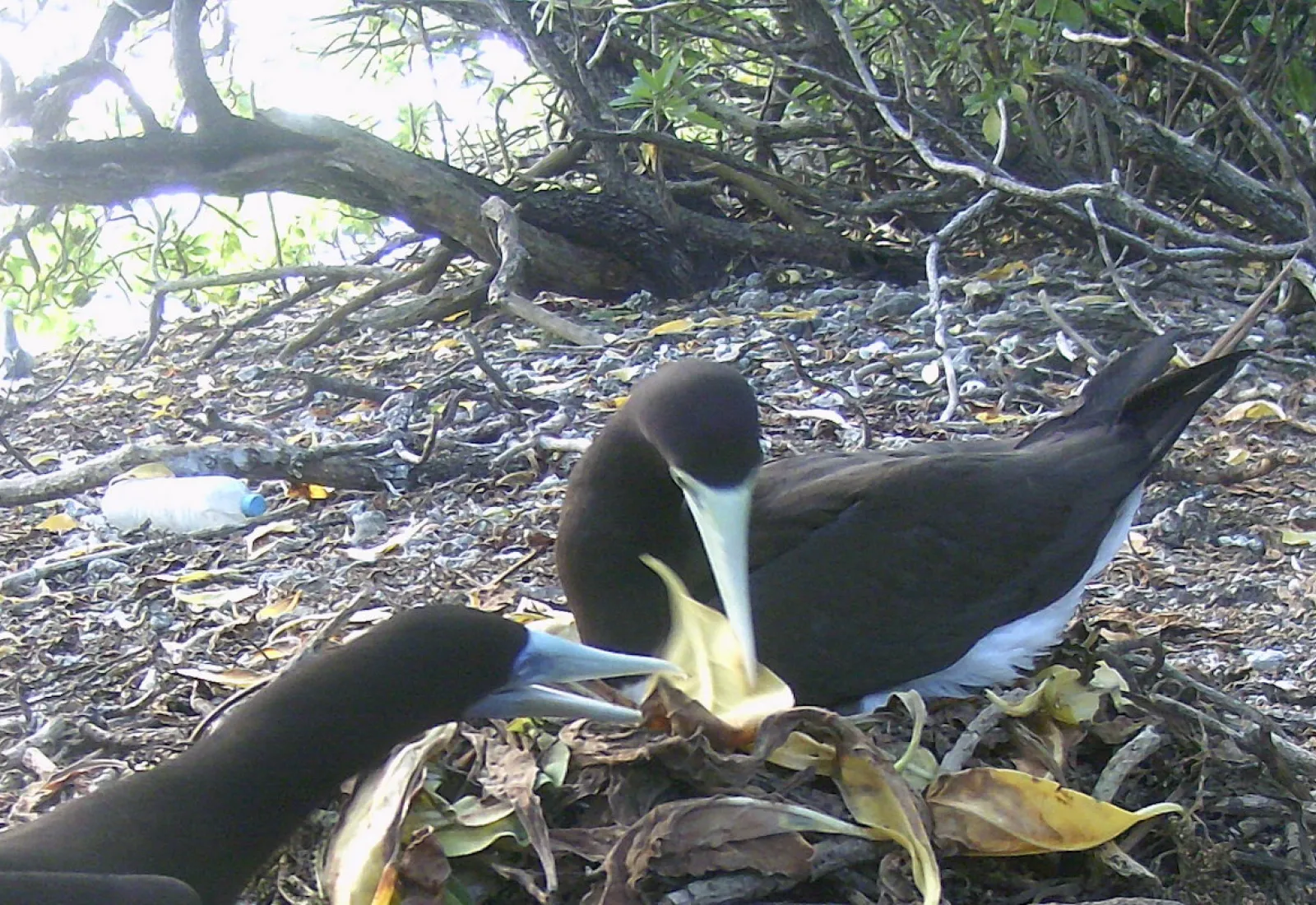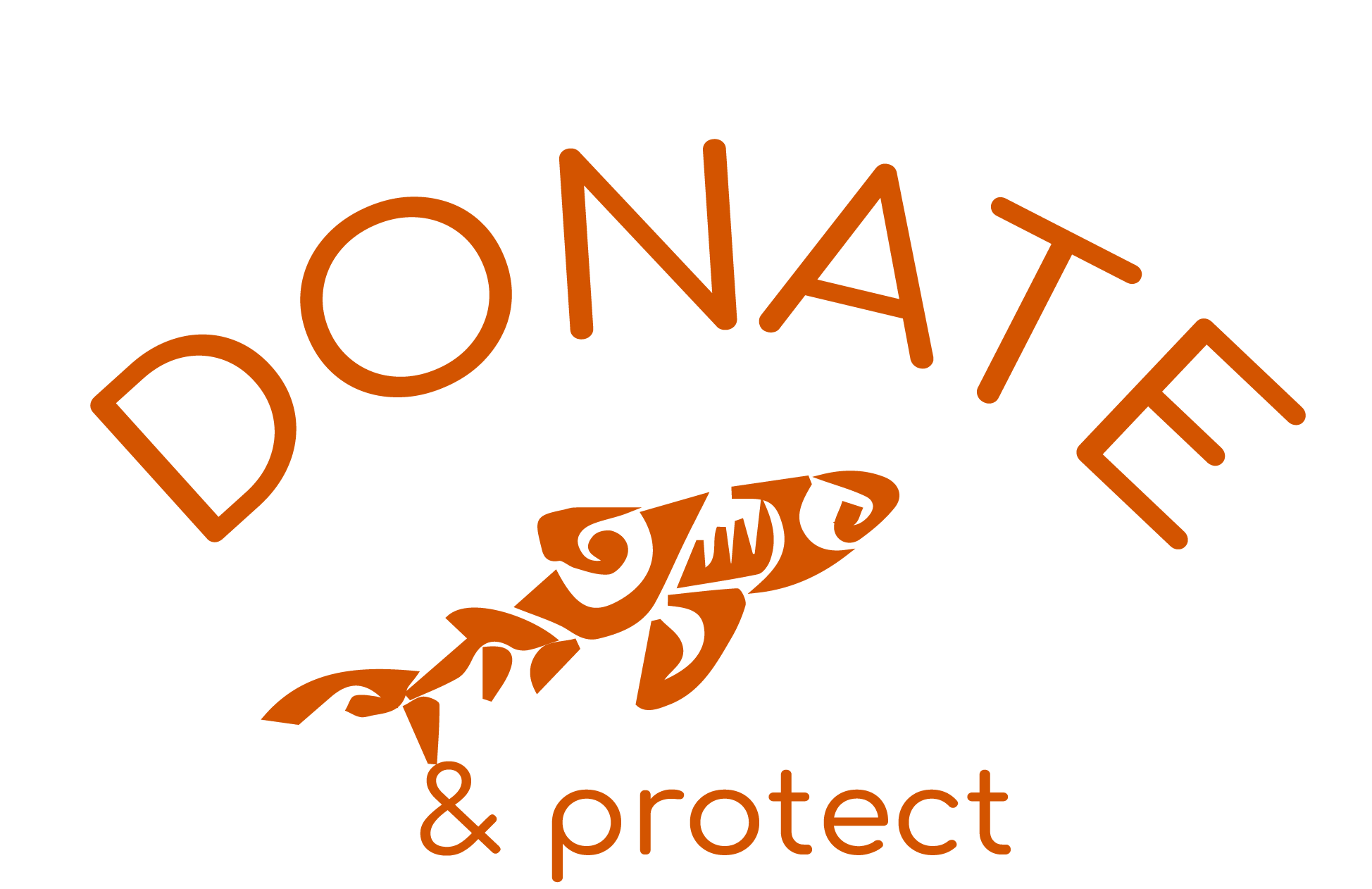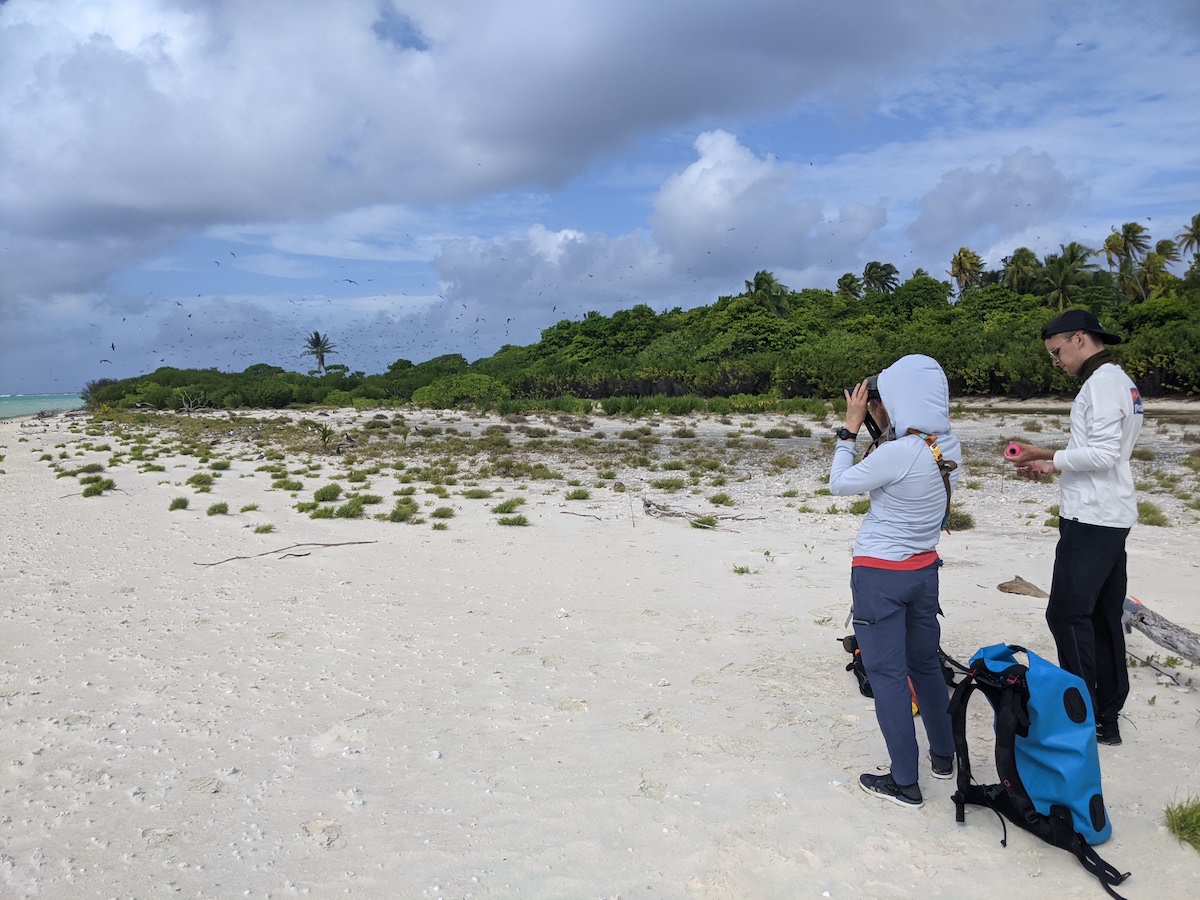Nest camera records a rat bothering a nesting brown booby.
Tetiaroa Atoll, in the Society Islands of French Polynesia, is an area of key importance for seabirds in French Polynesia. The atoll supports thousands of nesting seabirds, including ten different species and four IUCN locally threatened species. On Tetiaroa, like many islands across the globe, invasive rats prey on nesting seabirds. The once-thriving seabird population has been significantly reduced by rat predation, impacting both terrestrial and marine ecosystems due to decreased nutrient inputs from guano.
Tetiaroa Society and Island Conservation are protecting Tetiaroa’s seabirds and other native species by completing removal of invasive rats from every island in the atoll in August 2021. This builds on the removal of invasive rats from Motu Reiono in 2018 and on Onetahi and Honuea in 2020.
Dr. Gardner and graduate student Amelia DuVall are currently on Tetiaroa with a team of ecologists collecting data prior to removal of rats, something that has rarely been possible with other island eradications. They will return to the atoll several times post-eradication to collect data. The University of Washington seabird scientists are working to:
- Develop a model of changes in seabird distribution following rat removal,
- Develop baseline nest monitoring to identify changes in nest success following rat removal,
- Develop baseline mark-capture date for ongoing survival analysis to determine how survival, breeding probability, and movements following eradication, and to determine the relationship between marine conditions and seabird survival and breeding probability, and
- Build an understanding of the marine areas in which Tetiaroa’s seabirds forage to better understand how marine conditions shape the demography of these species.
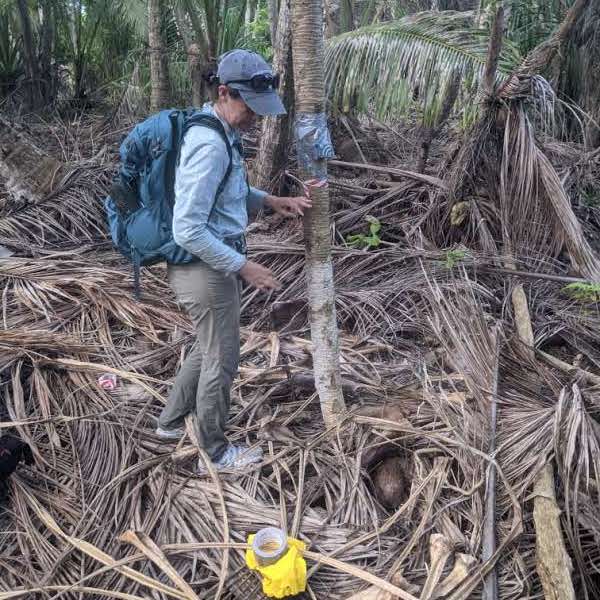
The team is deploying small acoustic recorders throughout the atoll.
To carry out this research, the UW seabird team is deploying small acoustic recorders throughout the atoll. The recorders allow them to determine if different species are moving throughout the atoll and to monitor changes after the eradication. They are also setting up nest monitoring sites – locations where they record all the nests in an area and then observe them every 1-3 days to determine the rate at which the eggs hatch (as opposed to ‘failures’ where the embryo does not survive to hatching).
They are also banding birds, where a leg ring or band is placed on the birds leg. This allows them to follow individual birds throughout their lives to better understand the survival of birds as well as where they are around the atoll when we see a bird with a leg band.
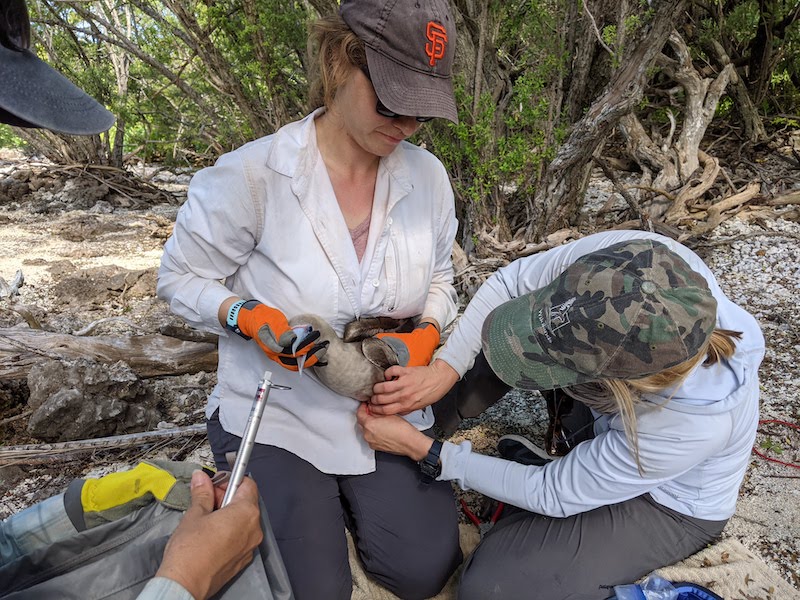
Amelia putting a leg band on a brown booby
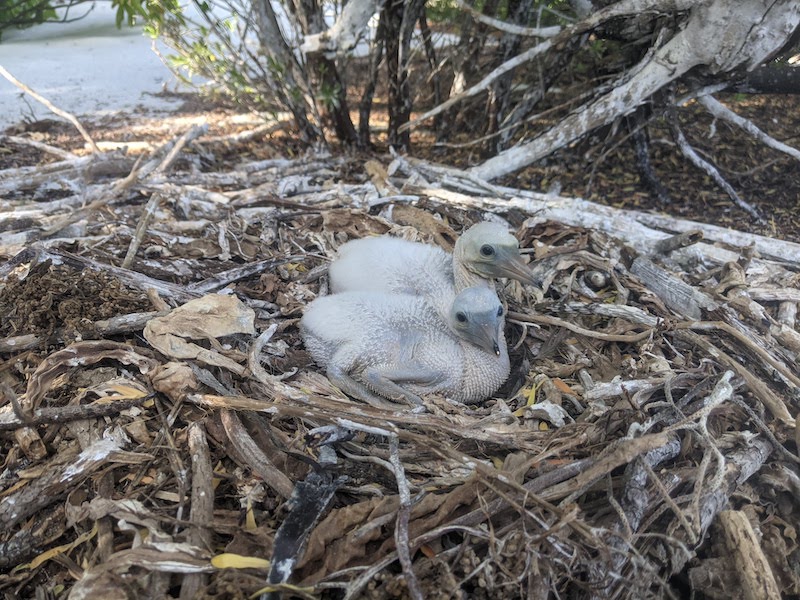
Many of the Brown Booby nests this year had not only two eggs but some had two chicks. It is common for only one chick to survive after hatching. We look forward to learning more about the Brown Booby nesting patterns as we continue to monitor them.
Below is an overview of Dr. Gardner and her team’s daily schedule to provide insight into life as a scientist on Tetiaroa:
Journal:
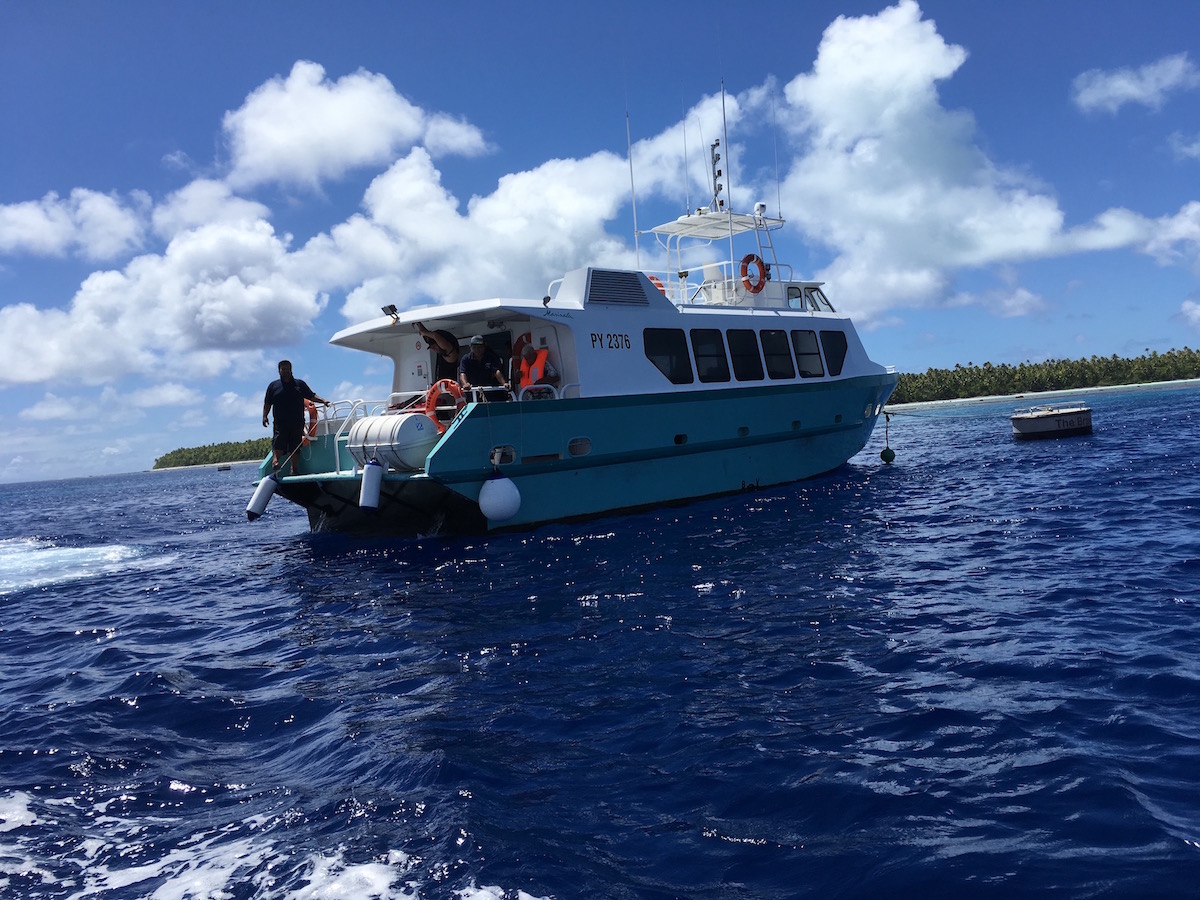
The boat to Tetiaroa arrives.
28 June
- Arrive at Papeete at 05:05
- Take 08:30 boat to Tetiaroa Atoll (arrive 13:00)
- Organize gear and prepare field supplies
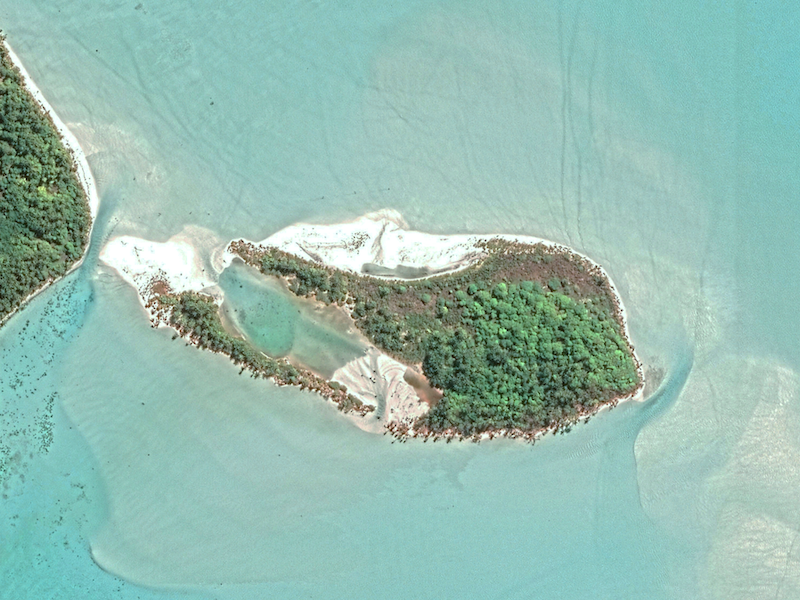
Motu Iti / Bird Island
29 June
- Dropped at the west side of Rimatu’u.
- Deployed 5 audiomoths (acoustic recorders) on Rimatu’u
- Walked to Iti (‘Bird Island’)
- Deployed 4 audiomoths on Iti and set-up monitoring net monitoring plots at each site.
- Deployed nest camera at monitoring plot B (Iti02).
- Nesting spp seen: BRBO (Brown Booby), RFBO (Red-footed Booby), SOTE (Sooty Tern), CRTE (Greater Crested Tern), BRNO (Brown Noddy).
- Picked up on east side of Rimatu’u
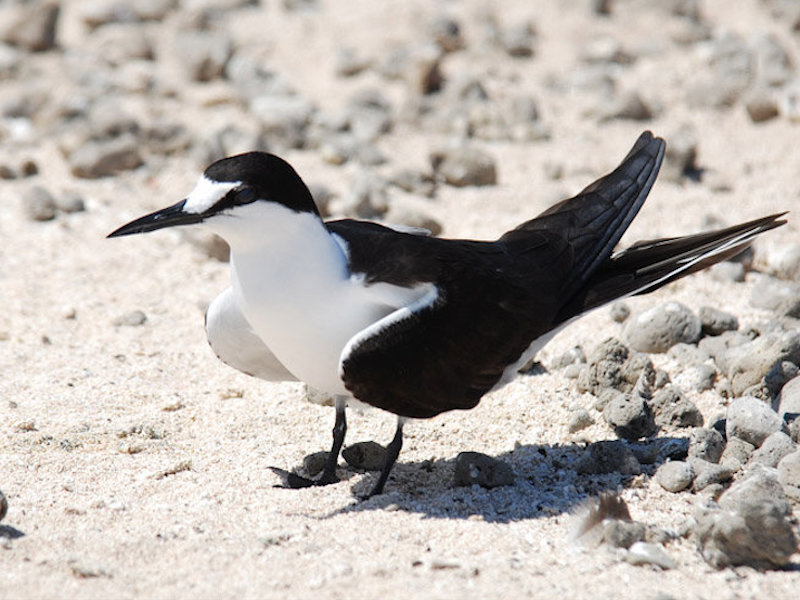
Sooty tern, kaveka in Tahitian
It is always exciting to arrive on Iti and hear the loud calls of the Sooty Terns. We arrived in late June this year and found Sooty Terns with all ages of chicks and eggs on Iti!
Brown booby with chick
30 June
- Dropped at Hirannae
- Deployed audiomoths at all sites at Hirannae (n=3) and Oroatera (n=5).
- Lots of nesting Frigate-birds along north of Hirannae
- Created BRBO nest monitoring transect ~1 km long. Marked 8 nests with eggs. Placed 3 cameras on nests.
Red-footed booby
1 July
- Dropped at Tiaraunu
- Deployed audiomoths at all sites on Tiaraunu (n=10), Tauini (n=2), Auroa (n=1)
- Created BRBO nest monitoring transect ~1 km long. Found and marked 9 active nests, all with 2 eggs. Placed cameras on 3 nests.
- Completed 2 RFBO nest monitoring plots (A, B), found 13 RFBO nests (checked each for eggs).
Brown booby eggs
2 July
- Dropped at Rimatu’u on west side, walked across trail to Iti
- Established one 15x15 m monitoring grid on Rimatu’u (for future monitoring)
- Established BRBO nest area search and transect. Marked 10 nests with eggs. Placed 3 cameras on BRBO nests.
- Established RFBO nest monitoring plots. Created 6 sampling plots; approx 19 active nests.
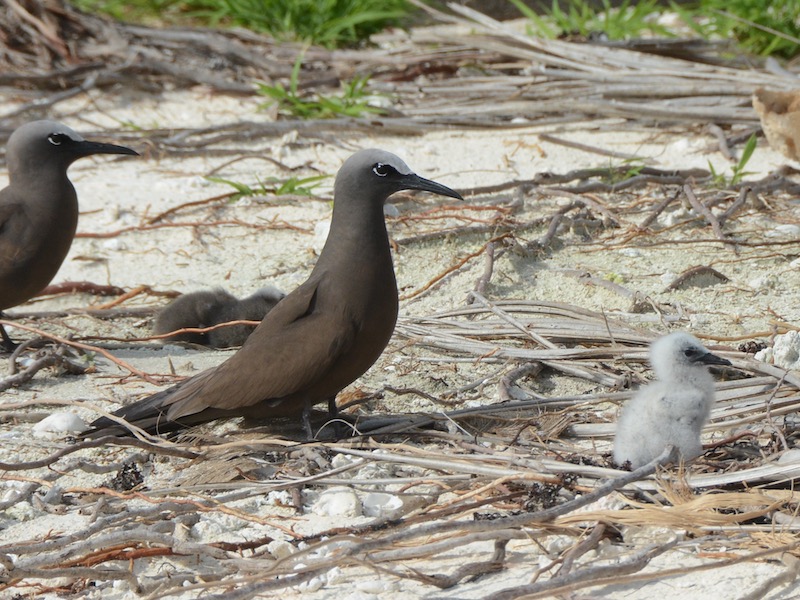
Brown noddies at a nesting site
3 July
- Kayaked to Honuea and deployed audiomoths (n=3) Returned by 8:30am.
- Dropped at Hir/Oroa, walked to North side of motus
- Monitored BRBO nest transect (found 2 new nests)
- Established 9 RFBO nest plots, checked at least 50 nests (but not all were active).
- Banded 1 RFBO bird
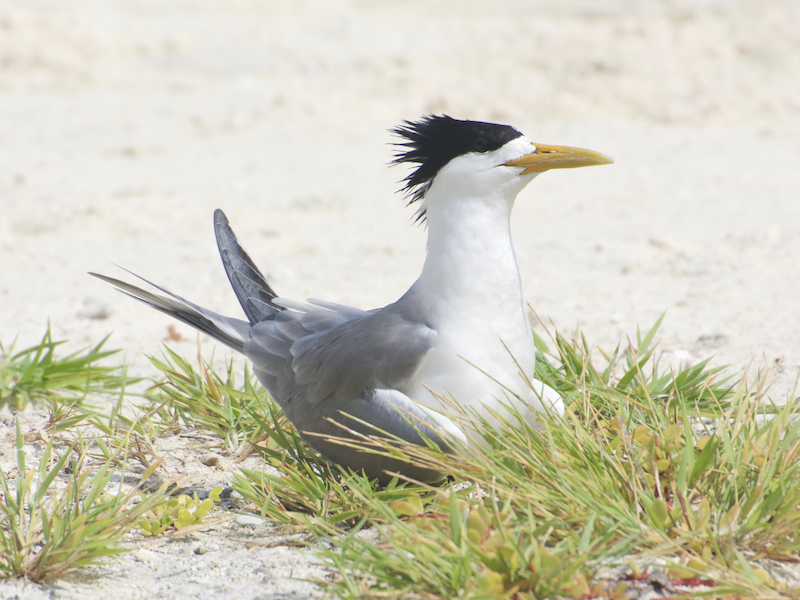
Crested Tern
4 July
- Team to Iti to work on nest monitoring (AJD, SG, LP).
- Checked n=4 nest monitoring plots.
- Rechecked BRBO nests on the transect.
- Created 5 new RFBO monitoring sites and rechecked nests on n=4 sites established on 7/2.
- One team dropped at Reiono deploy audiomoths (n=4); swam to Rahi to deploy audiomoth(n=1). On Reiono, conducted 14 point counts (previously counted at these sites in 2018 and 2019)
Juvenile booby in the nest
5 July
- Team to Tiaraunu to finish establishing RFBO plots, re-check existing plots (BRBO and RFBO), and band RFBO/BRBO
- Checked BRBO transect. Found 1 new nest with eggs just west of transect. Placed 1 new camera. Observed 1 nest with chick and egg previously 2 eggs. (hatching success)
- Deployed 4 cameras (changed settings to 3/5 photo burst, no video, 15 second delay)
- Banded 4 RFBO in/near Tia plots
- Backed-up all data and notebooks
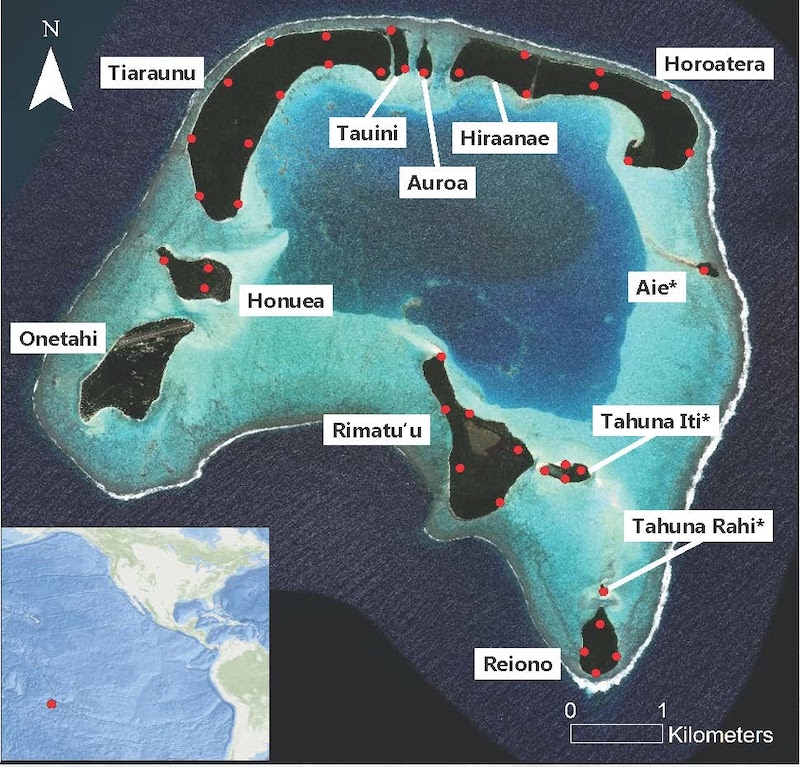
Locations of the acoustic recorders on Tetiaroa.
6 July
- Team to Hirannae
- Banded (8) BRBO chicks/fledglings between RFBO plots and BRBO transect.
- Checked all RFBO nest plots. Recorded new nests.
- Saw rat skull at BRBO nest ORA-B.
- BRBO nest ORA-E went was empty (first encountered at 2 eggs, then 1 egg). Depredated eggshell found nearby.
- Saw rats on Hir trail.
- Developed camera metadata spreadsheet
- Backed-up all data and notebooks
Understanding the effects of rat eradication on seabirds at Tetiaroa, French Polynesia
PIs: Beth Gardner*, Sarah J. Converse*, and Julia K. Parrish
Lead graduate student: Amelia DuVall
School of Environmental and Forest Sciences, University of Washington bSchool of Aquatic and Fishery Sciences, University of Washington
*Co-Principal Investigators
On this trip in Tetiaroa: UW professor Beth Gardner and UW graduate students Amelia DuVall, Abby Bratt, Sierra Gillman, Liam Pendleton.

